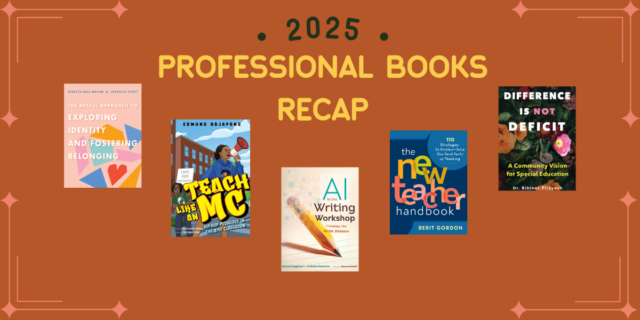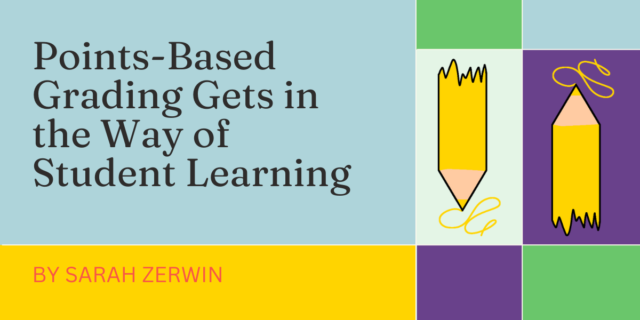
The following is an adapted excerpt from Teach Like an MC by Edmund Adjapong.
Start Here: What Is Hip-Hop Pedagogy?
Why Hip-Hop Pedagogy?
It’s common for educators to fear judgment when engaging in teaching and learning practices that feel new or untraditional—especially those anchored in hip-hop culture. These fears may be grounded in negative perceptions of hip-hop culture, which reflect a lack of understanding of hip-hop—its ingenuity and connection to youth. These fears may be grounded in a belief that it is not an educator’s responsibility to acknowledge their student’s culture. These fears may be grounded in an educator’s interest of learning about your student’s culture, but not knowing where to begin. At its core, hip-hop is a multimodal culture that provides various opportunities for participants to connect and engage with content. Depriving students of such learning experiences demonstrates a lack of understanding of your students and the responsive practices necessary for their achievement.
Hip-hop pedagogy is anchored in the creative elements of hip-hop, which is a cultural phenomenon that youth practice and engage in within their communities or access through media. Because hip-hop pedagogy is informed by hip-hop culture, it serves as both a culturally relevant way of engaging youth and as a way of incorporating multiple modalities within the instruction. Graffiti art activities allow students to make visual representations of concepts. The MC inspired call-and-response provides an opportunity for students to aurally engage and learn concepts. Breakdancing activities provide students an opportunity to physically and kinesthetically move to gain a better understanding of science concepts. Thus, hip-hop pedagogy encourages visual, aural, reading/writing and kinesthetic learning styles (VARK) (Sankey, Birch and Gardiner 2010). Fleming (2001) proposed that learners have a preferred learning style, namely, visual, aural, read/write or kinesthetic (VARK), with many students (about 40 percent) being multimodal (using a combination of these).
Hip-hop culture has impacted and empowered youth populations across the globe, especially youth of underrepresented groups, since its conception (Adjapong and Emdin 2015). Recognizing how inclusive hip-hop culture is to a variety of multimodal learners, it is easy to understand why hip-hop as a culture has transcended many other cultures and undoubtedly influences young people who serve as its chief participants. To incorporate youth culture in schools, we must not only look at how and what young people are engaging in outside of school spaces, but we must learn to value it. Once we as educators understand the rich history and utility of hip-hop culture, we can then begin to value hip-hop as a culture. We can interrogate how hip-hop influences groups of people and, thus, leverage it as a conduit to making schools and educational spaces culturally responsive and equitable. Utilizing hip-hop pedagogy can provide you, the educator, with an opportunity to focus more on the cultural understandings of the youth and the communities you serve.
Hip-Hop Identities and Funds of Knowledge
Hip-hop pedagogy is informed by a sociocultural framework that explores the concepts of culture and social capital as they relate to the experiences of young people who identify as part of hip-hop culture. Vygotsky states, “human activities take place in cultural context, [and] are mediated by language” (John-Steiner and Mahn 1996, 191). Vygotsky asserts that we are never free of cultural influences. Even when engaging in action alone, cultural influences shape our thoughts and behaviors. The ways students dress, the ways they talk, the ways they dance, and the media they consume, as well as other nonverbal forms of communication, are informed by the cultures they experience both inside and outside of school. Many students’ experiences outside of school are rooted in hip-hop culture (Emdin 2010). Once those practices are incorporated into teaching and learning, students are given the opportunity to engage in content as seamlessly as they would within their communities. I suggest bringing hip-hop culture into classrooms, not only by incorporating it into curricula but also by incorporating the culture into the ways in which teachers teach their students and into the overall school community. When classroom exchanges around content occur with the intentional use of hip-hop forms of communication, students use their funds of knowledge to engage with content because it’s reflective of who they are (Lave and Wenger 1991; John-Steiner and Mahn 1996). Being culturally relevant through Hip-Hop Pedagogy not only allows students to view themselves and a culture that they value as a part of the classroom, but over time, it can also encourage independent self-education of content since students will take increasing responsibility for their learning (Ladson-Billings 1995).
In order to effectively teach and engage students, educators must be able to make connections between the global community, the content area, and students’ local community, which in many instances can be different from that of the teacher. To function within a given culture, a person draws on a set of skills and knowledge that have been historically and culturally developed. These skills are called funds of knowledge. Scholars encourage the use of the funds of knowledge framework to better engage students across content areas (Barton and Tan 2009; González, Moll, and Amanti 2005; Hammond 2001; Moje et al. 2004). Integrating funds of knowledge into classroom activities creates a richer and more highly scaffolded learning experience for students. When an educator takes a step back from being a master of content and becomes a learner of their students’ culture, experiences, and realities, it provides them with a unique opportunity to gather appropriate resources that are reflective and representative of students’ experiences to use in the classroom.
Given the popularity of the music genre, the reach of hip-hop culture is broad. We all engage with it in a variety of ways, whether deeply or passively, and, as a result, possess a hip-hop identity. Some of us engage in hip-hop sensibilities in our homes, with our families and communities—hip-hop as a way of life—while others have a deep consumer-based connection to hip-hop culture. Regardless of how they connect and engage in hip-hop culture, most of our students have developed a fund of knowledge that allows them to successfully engage within hip-hop culture. Hip-hop pedagogues tap into their students’ funds of knowledge and make connections to content areas to provide students with a learning experience anchored in their students’ culture.



